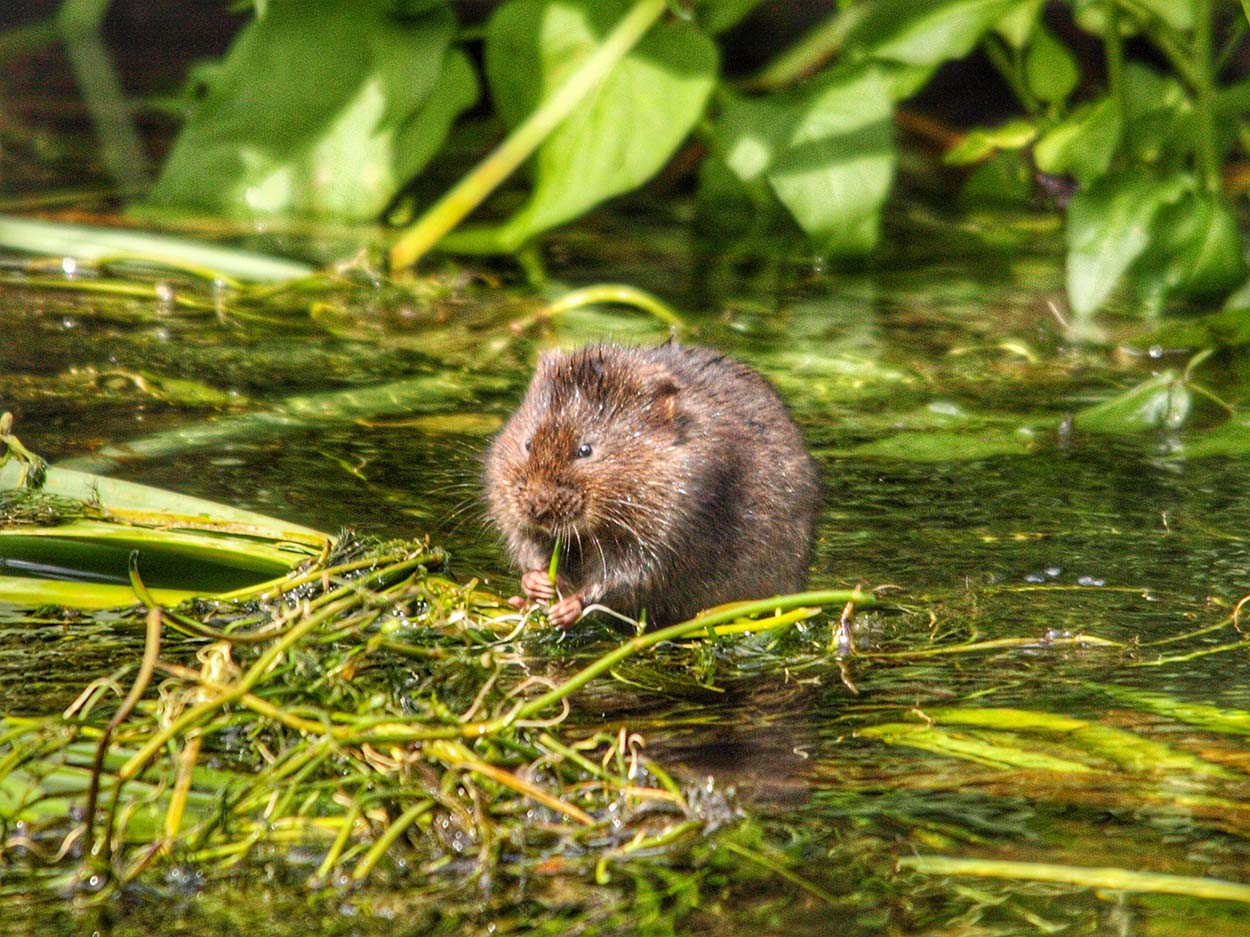Voles may not be the kind of garden wildlife you’re hoping to see. Although they’re cute, they can damage your garden in various ways, so prepare your garden with our Beginner’s Guide to Voles.
Voles aren’t as well-known as some of the other garden wildlife you may see, such as birds, foxes, and hedgehogs. This might be because they’re smaller, hidden underground, or often prefer to come out at night. Either way, you want your garden to be ready for their appearance or you might see your precious flowers, vegetables, fruits, and trees becoming their personal buffet.
Let’s learn all about British voles!
What is a vole?
Voles are small, often nocturnal mammals that like to live in long grass, compost heaps, and above-ground tunnels. They are frequently found in gardens, but because they’re quite shy, you are unlikely to see them unless you have a habit of staying up late with the night-vision goggles.
Their closest relatives are lemmings and hamsters.
Three kinds of vole you might see in your garden:
1. Short-Tailed Vole:
- Grey-brown fur.
- Their tail is only 1/3 of their length.
- Active in the day until winter.
- 5-13.5cm long.
- Love eating grass and plant shoots.
- Favourite habitat: Straw or grass compost heaps.
2. Bank Vole:
- Red-brown fur that’s lighter on their underside.
- 8-11cm long.
- Love eating seeds and fruit.
- Favourite habitat: Banks, hedges, or near shrubs.
3. Water Vole:
- Dark brown fur with a brown-grey underside.
- 15-20cm long.
- Recognisable for their blunter heads and small tails.
- Love eating plants.
- Favourite habitat: Near water, such as garden ponds.
- Less common than Short-Tailed or Bank voles.
Are voles good or bad for my garden?

3 reasons voles are good for you garden:
- Voles eat insects that may feed on your garden’s plants and flowers.
- Voles eat weed seeds, so hopefully there’ll be less weeds for you to deal with.
- Voles are an important part of the food chain for garden wildlife like owls and foxes.
4 reasons voles are bad for your garden:
- Voles won’t think twice about eating your newly planted seeds, whether they’re in your garden or your greenhouse.
- Voles have a real appetite for fruits and vegetables, including Brussel sprouts, beetroot, potatoes, strawberries—well, anything really!
- Bank voles also particularly love eating new bulbs, corms (like onions), and tubers (like potatoes). In the autumn, they’re also partial to tulips.
- Voles may strip the bark off trees, especially beech trees, and have also been known to chew on shrubs on herbaceous plants, such as peonies.
If it’s not already obvious from this list, they’ll eat almost anything they can get their little hands on, so let’s look at how we can protect your garden from voles.
How to prevent voles from ruining your garden:

- Start by planting your seeds and bulbs in pots indoors. This stops voles eating the seeds and bulbs straight out of the ground and undoing all your hard work.
- Use a fine mesh wire netting (no more than 6.5mm wide) to stop voles from being able to get into your growing plants and vegetables—make sure this goes slightly into the soil to stop them from digging under.
- Use a similar mesh wire to cover new bulbs and seeds, or around the bark of tree and shrub steams to prevent voles from gnawing at these.
- If you have a greenhouse, a concrete floor can stop voles from digging their way inside, or you could place your greenhouse onto an existing man-made patio.
- If necessary, use humane live-capture traps. If you decide to do this, you need to commit to checking your traps every day and moving any trapped animals to a safe place at least half a mile from your garden. Any closer than this and they’ll likely find their way back.
Get to know your garden wildlife!
We really dug up all the dirt on voles in this article, like we’ve been doing for a variety of animals in our growing Beginner’s Guide to Garden Wildlife.
If your feathers aren’t too ruffled from the potential dangers of voles in your garden, you might also be interested in our Beginner’s Guide to Birds.


